FlatOut 4: Total Insanity Review
Competent craziness with a few bumps along the way
If there is one thing we learned from FlatOut 3: Chaos & Destruction, apart from the fact that it should never be played, it would be that it is not enough to have good intentions. Sequels can't rely on the base features that made their predecessors great; they have to ensure quality. With poor visuals, bad physics, and technical issues, the third game damaged the brand like a truck slamming into a hatchback pinned against a concrete pillar. So it was time for a new developer to step in and recover the wreckage. Enter developers Kylotonn, who are behind FlatOut 4: Total Insanity, some 10 years after the last proper entry in the series. FlatOut 4 is a much better game than the aforementioned abomination. But the third game set the bar lower than a go-kart's axle that it wouldn’t take much to step over. So compared to the older, better games, it is a decent sequel but still in need of some tuning. Kylotonn's basic design is solid and faithful, but when it comes to execution the answer is a bit more complicated.
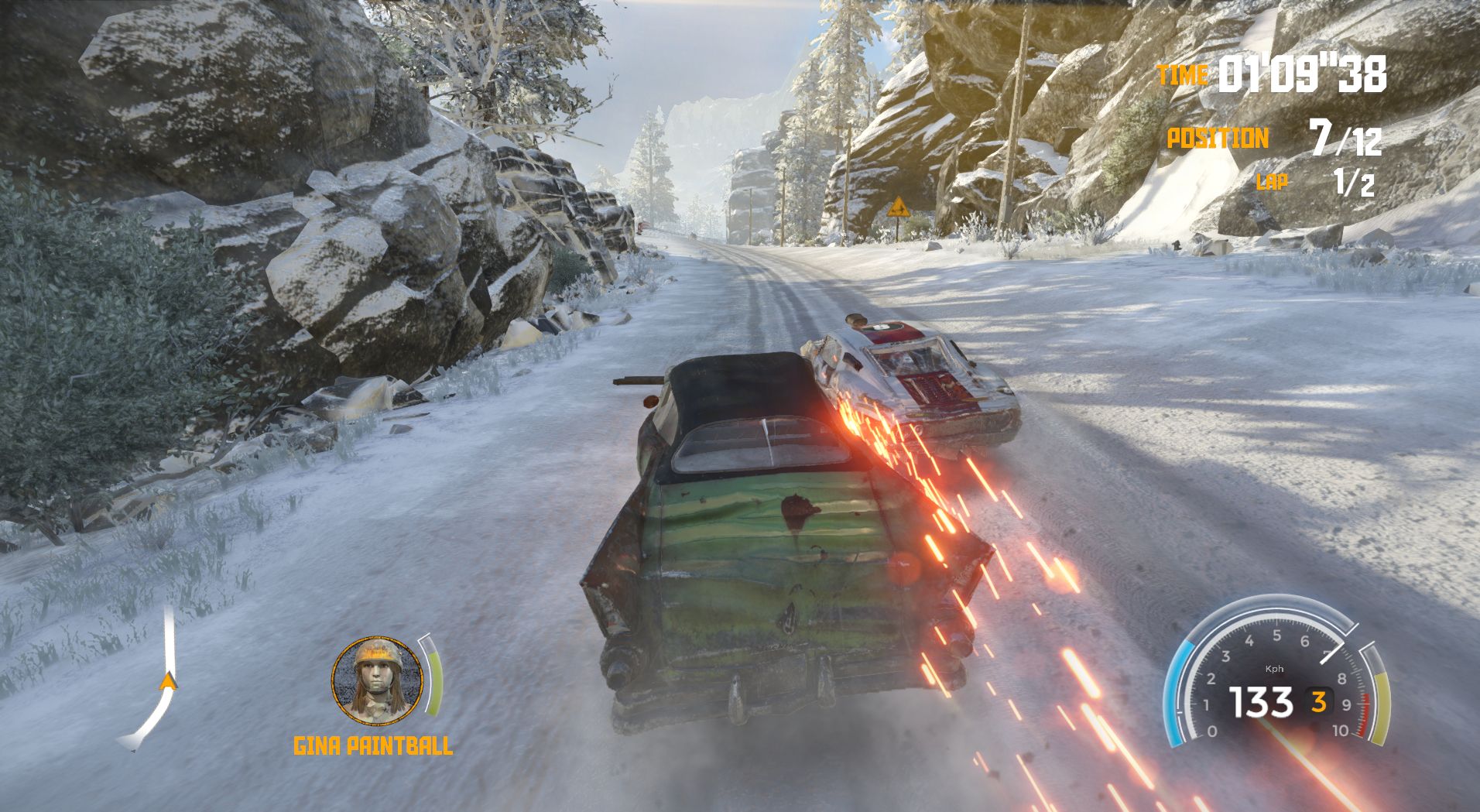
If you are new to the franchise, or just need a refresher, then the FlatOut games are really quite simple: you drive various cars at top speed through non-conventional, backwater race tracks, and crash into opponents and objects strewn nearby. Crashing generates nitro boost which can make you even faster, so you can crash even more. You can slam into other vehicles to gain positions, or take shortcuts through fences (or buildings), all while trying to be the first across the line. FlatOut 4 preserves this, and retains the satisfaction of crashing through a pileup and coming out on the other side in front. It is also faster than the older games, with more speed gained from nitro and less resistance from breakable objects.
Career mode is the largest part of the single player. It contains standard races, survivor events (destruction derby), time trials and the new combat-focused Assault races. You will be driving across the same tracks for the better part of 12 hours, across three vehicle classes. Each vehicle class contains a small selection of cars, from sports sedans to ice cream trucks, although their basic designs are shared across classes. Handling does not change much, but the starting class is certainly the slowest. Vehicles can be purchased and upgraded for a tidy sum, assuming they have been unlocked. It takes a while to earn ample funds to splurge on extra vehicles. Winning races and completing events is the primary source of income, but there is bonus money if you crash opponents. This, along with nitro boost gained from collisions, provides great encouragement to bump nearby cars during races.
All the race tracks are well designed and feel right at home in the series. There are four main environments: forest (lumber mill), desert, snow, and factory. Each setting has two primary tracks, used in forward and reverse. Their designs are well matched to vehicle speed with barely any need for brakes. All tracks have side routes that help spread the field and promote collisions upon merging. One such branching path is found near a train station in one of the desert tracks, and its cramped layout always presented a difficult choice depending on nearby vehicles and momentum. Some alternative routes are clearly shortcuts, like a gap through a mountain ridge in one of the snow tracks. Despite these shortcuts being slightly harder to navigate, they were far too beneficial to bypass. Alternative routes could have been packed with more breakable objects to entice switching each lap. Apart from the eight main tracks, there are two figure-8 dirt tracks that provide extra chaos across all vehicle classes, although their relatively small size and infrequent use keeps the focus on the primary locations.
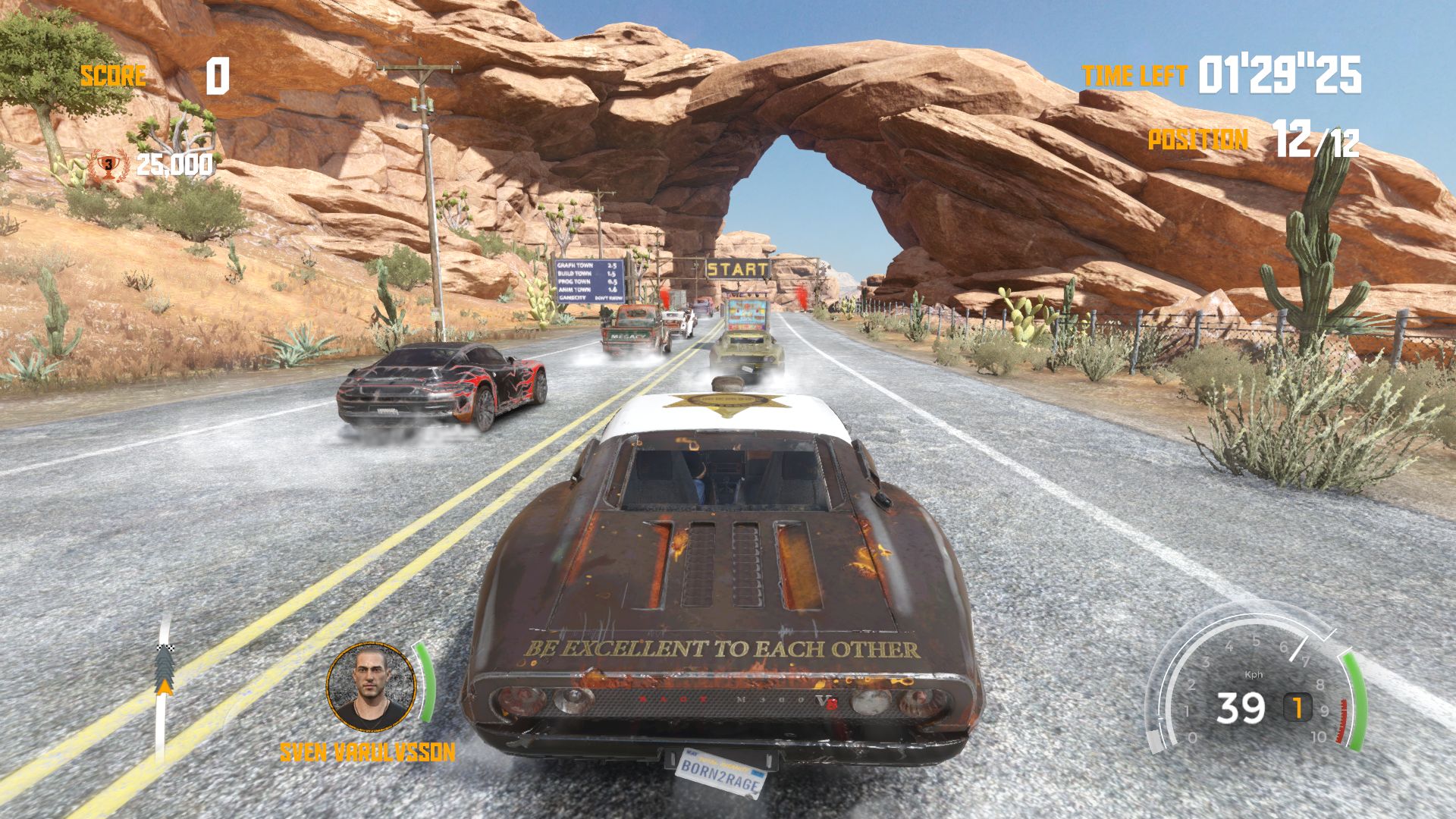
While the track layouts survive scrutiny over time, they do get a little stale by the end of the Career mode. It is good that races are kept short (typically 3 laps) and championships don't usually consist of more than four different races. Almost everything experienced when driving the first vehicle class is merely repeated again. The exception comes via two smaller tracks that are only used twice in the final vehicle class, as though they were demoted purely to provide a tiny amount of variety when the career needed it most. One of these, the sewer tunnel racetrack, was probably relegated because the AI drivers have trouble navigating its winding interior without destroying themselves. The computer drivers are generally not much of a challenge, although it is pleasing that auto catch-up is unnoticeable. While the tracks are solid, adding a few more, and tweaking existing layouts, would have done wonders.
Some issues arise when some of the vehicles are used on certain tracks. For example, the VW Beetle lookalike has rigid and hyperactive suspension that makes it unstable. At specific points in the tracks there are miniscule deviations. When driving over one, the vehicle will flip into the air, pirouette, and land upside down in a ditch. Even train lines in the lumber mill caused the same bizarre physics reaction, as some cars often rolled forward and lost control. The AI drivers also suffer from this problem, comedically flying high into the air following an innocuous corner. It could be said that the cars lack stability in general; many will launch skyward after a modicum of upward inertia, and they rarely land in the upright position. Expect to reset many times to deal with this problem.
Career mode is not just about the standard racing on the occasionally bumpy tracks. Time trials are self-explanatory, although they do not allow the use of nitro boost; they offer a good contrast because it is best to avoid the breakable objects. Getting a good time nearly requires all car upgrades, or the fastest vehicles in the class.
Survivor battles are also found in the career mode, and they are basically destruction derby events in specific enclosed arenas. While most arenas are decent carnage zones, the square arena's corners were a magnet for AI drivers who got stuck there waiting to be destroyed.
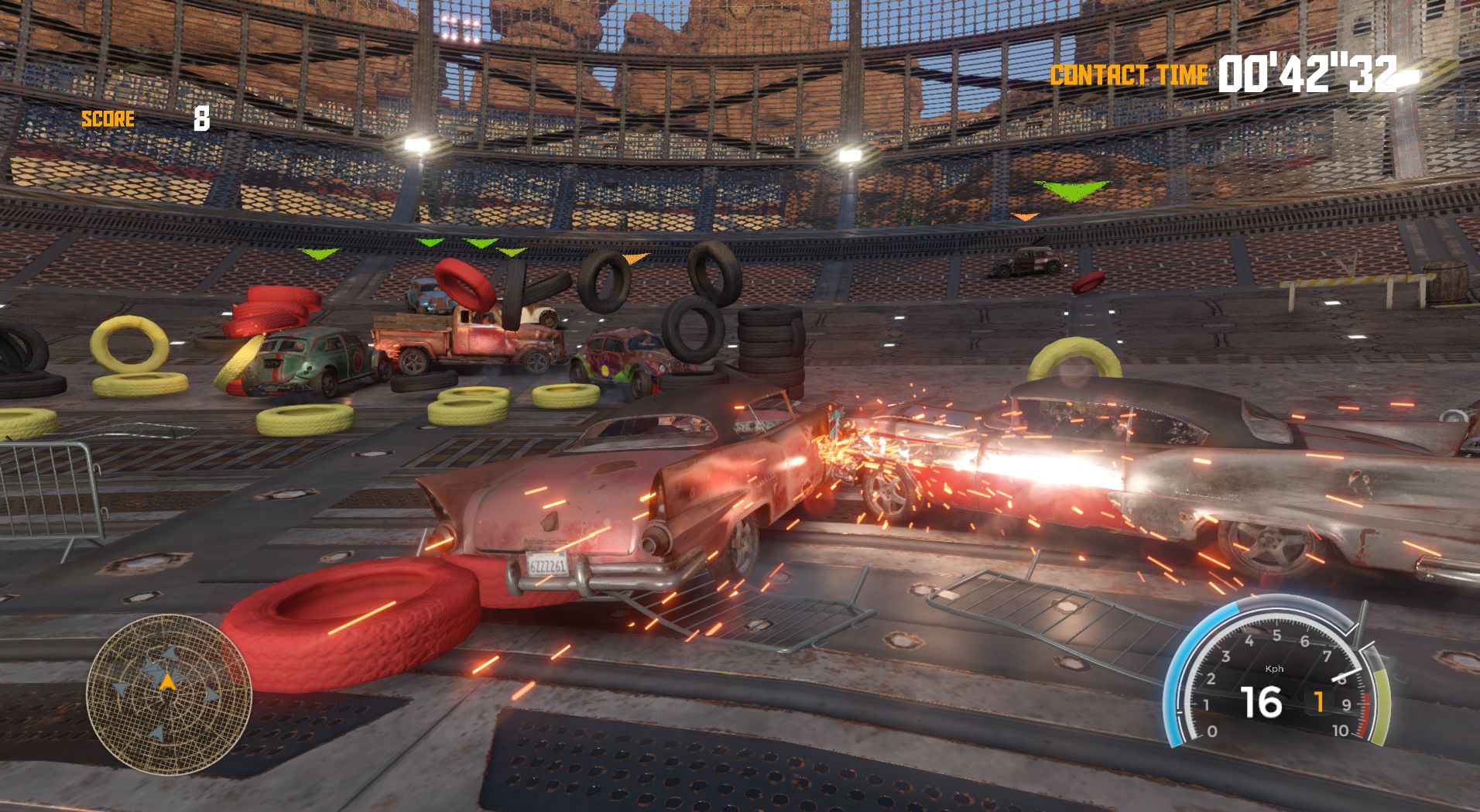
Assault is a new event for the franchise, offering a combat-based experience around the standard tracks. Similar to Mario Kart or Blur, you have access to power-ups depending on the current amount of nitro boost. There are four power-ups: an explosive ball that rolls towards other cars; a shunt move to knock those nearby; a magnetic trap that flips vehicles; and bollards that stop pursuers. Damage from the powers is low, but they are disruptive. Shunting a car near a cliff is a good way to say goodbye. If you are far behind, like at the start, you will earn nitro rapidly to use them often. Getting to the front is fairly easy, but once first you are not free from danger—a car one lap behind may place bollards to block progress. While the Assault powers don't have a huge impact on outcomes, they tend to disrupt the carnage more than compliment it.
Because of the length of the career, it might be wise to play the FlatOut mode intermittently because it contains stunts, deathmatch (destruction derby with power-ups), Beat the Bomb, and Carnage races. There are over 40 events but it will only take a few hours to complete. Earning gold trophies will unlock cosmetic items and new vehicles. Carnage events are a big part of this mode. Like in FlatOut: Ultimate Carnage from 2007, the goal is to destroy everything! Extra nitro boost makes the process easier and faster. Of course you still need to progress forward, so extra time is added to the clock when passing checkpoints. Carnage switches the mindset from deciding whether to crash or pass, to deciding which car you are going to ram into the wall for most damage. Instead of seeking to stay ahead, slowing down may provide more targets at the next corner. Between each crash, destroying chain-link fences and traffic cones will keep the combo bonus from ending. It is fun and frantic. Watching many cars get destroyed and keeping a good forward pace offers a suitable change from the standard racing.
Stunts return and are a mix of old and new with generally competent implementation. Like before, you eject your driver's ragdoll out the front window at a specific angle and hit targets by steering or nudging the twirling body. Of the returning stunts, most are decent but there are some problems. Baseball was particularly difficult; it took roughly 50 attempts just to get a bronze trophy because it required launching the ragdoll with such precision that it would bounce off the bat and score a homerun. Skipping stones also didn't have a great margin of error, although at least bronze was easy to earn. Other returning stunts include curling and fire rings, which are simple and faithful recreations.
There are six new stunts. Finnish bowling replaces ten-pin bowling, although it is not quite as fun. The pins shift greatly after getting knocked down and there is no overhead visual to indicate where they are located, so launching towards them in the next round is done based on a blurry glance as you descend down the ramp. Long jump involves launching the ragdoll at spinning fans, although judging distances is far harder than it sounds. Total Destruction is probably the biggest misstep of the new stunts, as you wait an eternity for the wooden blocks to stop moving after knocking them down like a house of cards. Felling wooden blocks seemed to be more about luck, as blocks sometimes refused to move after what appeared to be a hefty impact. The new and old stunts are a fun and inconsistent diversion, but some may be good enough to keep trying for the best score on the online leaderboards.
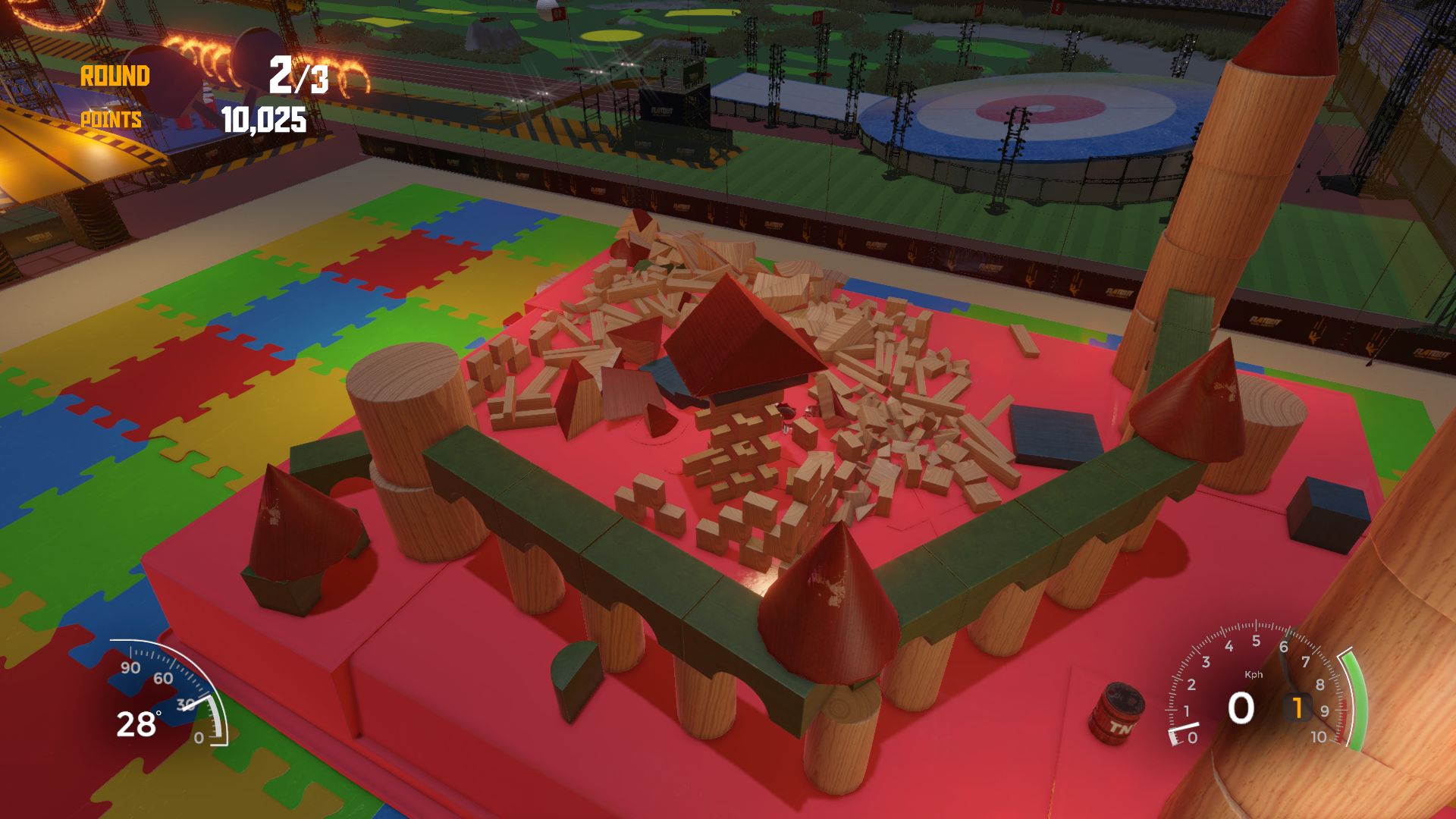
The other events in FlatOut mode are probably better than the stunts. Beat the Bomb should have featured more. It is basically time trials but with nitro boost, so crashing into barrels and shacks becomes crucial to maintain that high speed. The ideal racing line transforms into the ideal crashing line. Deathmatch and Keep the Flag are arena car-smashing modes with power-ups (armor, nitro, damage etc) although it's still about hitting and destroying vehicles as much as possible.
Although you cannot play the stunts online, all types of races and arena battles are available for up to eight players. Network connections were reasonable, even crashes operated as expected most of the time. Lighter impacts from other players did not seem to disturb the car as much, probably because of the network delays. Other players did warp around the track following massive crashes although it’s to be expected with the energetic physics. The number of players online is worrisome; perhaps the last game has damaged the franchise’s reputation because there is barely anybody in multiplayer. Regardless of region, finding matches on PC is going to be nearly impossible unless you find someone outside of the game. Unfortunately, empty slots cannot be filled with bots, so the races might be a little sparse when it comes to action and the arena modes may consist largely of driving around in circles. Although the multiplayer works fine, there may be nobody to crash into.
Vehicle damage and collision physics are a vital part of the game, both online or offline, and they work well enough to get a pass mark. The downside is that cars feel a bit like bricks with wheels. Hitting opponents from the side at great speed doesn't usually incur as much damage as it probably should. There is localized damage to vehicles, but it is rudimentary. Bumpers fall off and vehicles get dented on their appropriate side, but some cars end up looking like a freshly-made ham sandwich that was squeezed—they become oddly shaped and wavy. Some cars look better than others when damaged. While there are some fun crashes, the destruction is not quite good enough to keep you coming back for more.
At least this is probably the best looking FlatOut game to date. Environments are the best feature, particularly the desert and forest locations, with interesting backgrounds and appropriate track-side props. The weather effects and changing sun positions are also a nice touch. It is a shame the reflections on water look poor, most jarring in the aqueduct tracks. The anti-aliasing is not all that effective, so distant objects look blurry. Shadow range could be better, as there are ugly transitions not that far into the distance. Although the game is mostly bug free there was a rare issue where crossing the finish did not register properly—it actually reset the laps to zero. And some close online races incorrectly awarded the winner, raising serious questions about timing accuracy. Performance was fine throughout, despite a little bit of stuttering with vsync enabled.
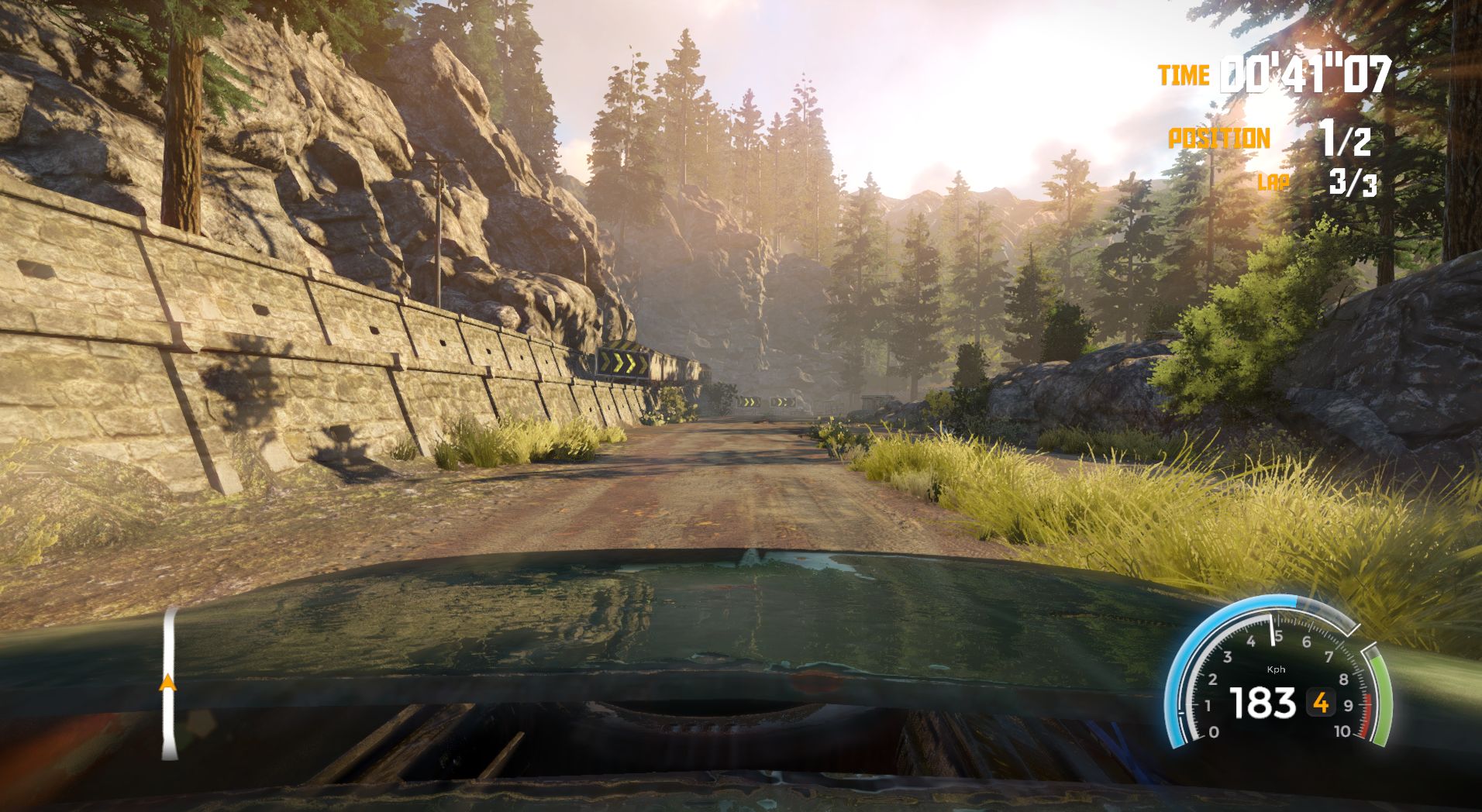
FlatOut 4: Total Insanity is an adequate sequel and a suitable first step for a new developer taking over an older franchise. But it is one that still falls behind. If you have extracted all the fun from its predecessors, then it might be worth a look. Expect to find good track design with fun alternate routes and plenty of destructible objects. Car speed is suitable and there is plenty of encouragement to slam into other drivers. Vehicle destruction is reasonable but not quite where it should be or as entertaining as the older games. Driving the cars is mostly fine, although they have some frustrating stability issues. Stunts and other arcade modes offer a reasonable diversion to mitigate the stagnation of the repetitive career mode. Basically, FlatOut 4 has all the right parts, but the chassis is not quite the right shape to fit them all without some compromises. With any luck, they will all go together after a few more crashes.
 Comments
Comments

















